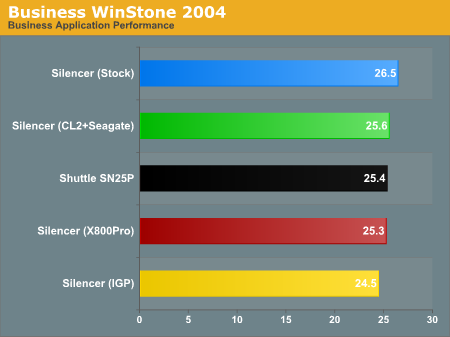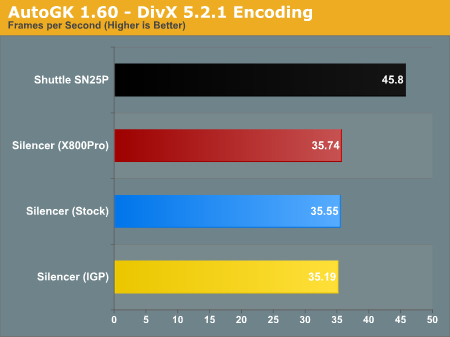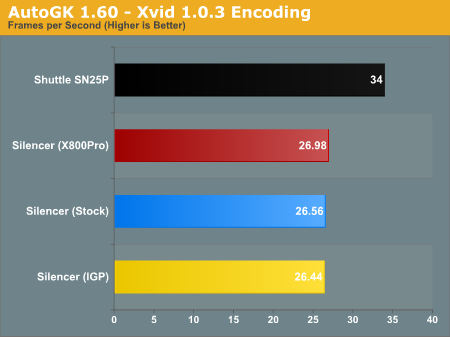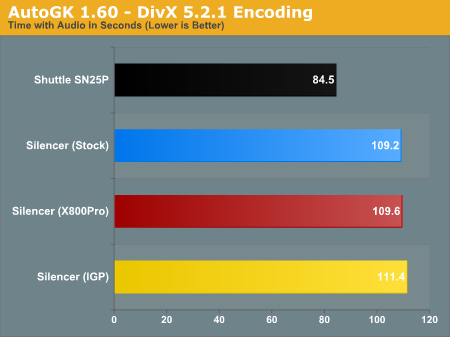System Review – PC-Club Silencer
by Jarred Walton on March 28, 2005 12:05 AM EST- Posted in
- Systems
General Performance and Encoding
We'll start with the WinStones 2004 results. The real world application of these scores is dubious, as most business/office applications tend to spend most of their time waiting on the user. However, we include them as a general indication of system performance. For more detailed benchmarks, we recommend that you look at our full coverage of Pentium M on the Desktop.


The Content Creation side of things is even closer in terms of the Silencer performance. Not even the IGP configuration really differs that much in performance. Here, however, we see the handicap of the Pentium M architecture. The Athlon 64 is noticeably faster, topping the highest configuration of the Silencer by just over 20%.
For our encoding test, we use AutoGK to encode a chapter from the “Sum of All Fears” DVD to 75% quality without audio, using both the DivX and Xvid codecs. These are one-pass encoding runs, which don’t get the best conversion quality, but they do provide a look at the video encoding performance of a system. As a more realistic re-encoding benchmark, we'll also include the time required to encode the sample video that we used in our Socket 478 and 745 SFF roundup to a target size of 5 MB, this time including stereo audio and with a fixed video width of 640 pixels. There are 900 frames in the video clip, so you could try to calculate an overall FPS rate for the conversion. We prefer to look at the total time rather than just a single pass, however, as AutoGK 1.60 ends up doing three complete passes plus some miscellaneous work to arrive at the final result.














22 Comments
View All Comments
QueBert - Monday, March 28, 2005 - link
In Russia, PC Silences you...QueBert - Monday, March 28, 2005 - link